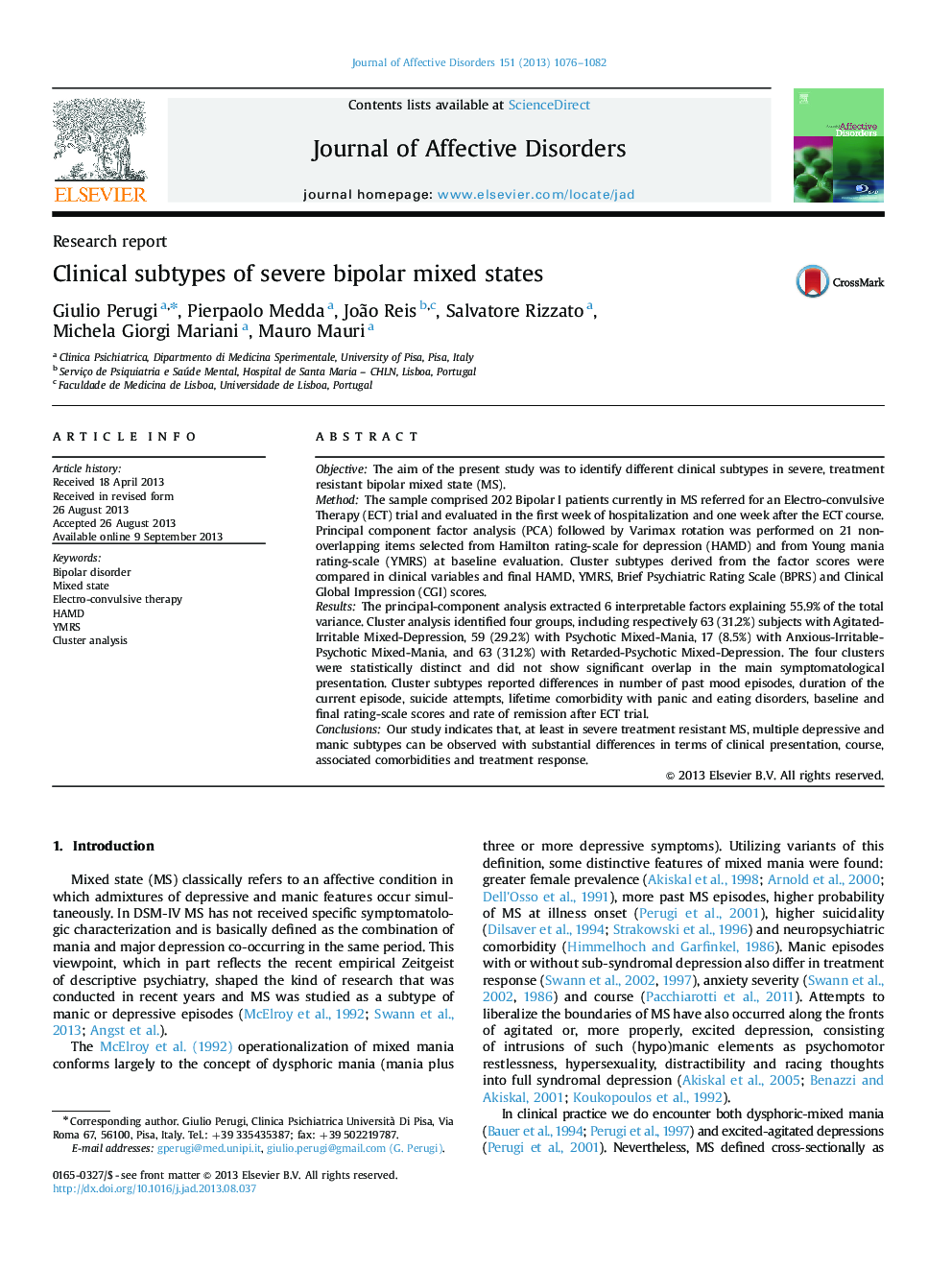| Article ID | Journal | Published Year | Pages | File Type |
|---|---|---|---|---|
| 6233519 | Journal of Affective Disorders | 2013 | 7 Pages |
ObjectiveThe aim of the present study was to identify different clinical subtypes in severe, treatment resistant bipolar mixed state (MS).MethodThe sample comprised 202 Bipolar I patients currently in MS referred for an Electro-convulsive Therapy (ECT) trial and evaluated in the first week of hospitalization and one week after the ECT course. Principal component factor analysis (PCA) followed by Varimax rotation was performed on 21 non-overlapping items selected from Hamilton rating-scale for depression (HAMD) and from Young mania rating-scale (YMRS) at baseline evaluation. Cluster subtypes derived from the factor scores were compared in clinical variables and final HAMD, YMRS, Brief Psychiatric Rating Scale (BPRS) and Clinical Global Impression (CGI) scores.ResultsThe principal-component analysis extracted 6 interpretable factors explaining 55.9% of the total variance. Cluster analysis identified four groups, including respectively 63 (31.2%) subjects with Agitated-Irritable Mixed-Depression, 59 (29.2%) with Psychotic Mixed-Mania, 17 (8.5%) with Anxious-Irritable-Psychotic Mixed-Mania, and 63 (31.2%) with Retarded-Psychotic Mixed-Depression. The four clusters were statistically distinct and did not show significant overlap in the main symptomatological presentation. Cluster subtypes reported differences in number of past mood episodes, duration of the current episode, suicide attempts, lifetime comorbidity with panic and eating disorders, baseline and final rating-scale scores and rate of remission after ECT trial.ConclusionsOur study indicates that, at least in severe treatment resistant MS, multiple depressive and manic subtypes can be observed with substantial differences in terms of clinical presentation, course, associated comorbidities and treatment response.
